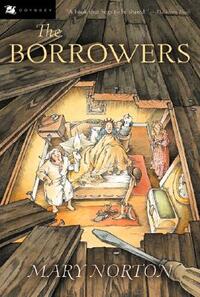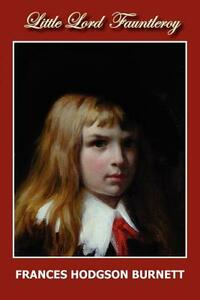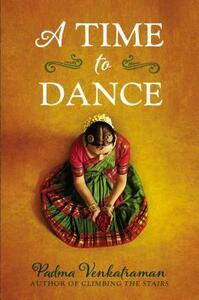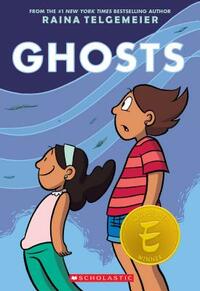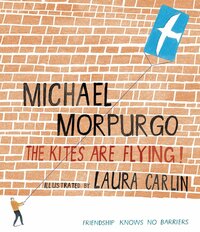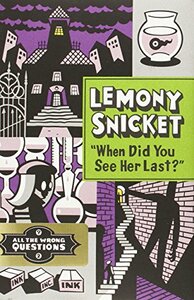Take a photo of a barcode or cover
patchy_at_best's Reviews (1.47k)
Elizabeth and Zenobia is Aussie author, [a:Jessica Miller|234169|Jessica Miller|https://s.gr-assets.com/assets/nophoto/user/u_50x66-632230dc9882b4352d753eedf9396530.png]'s wickedly clever debut. Although it nods to familiar fantasy tropes, it forges its own unique vision.
Elizabeth and her imaginary friend Zenobia are moving to Witheringe Green, her father’s childhood home. But there is much more to this old house than meets the eye. When family secrets lead to even stranger mysteries, Elizabeth must face her fears and save her family from otherworldly danger.
Elizabeth is our first person narrator. Unlike the fearless Zenobia, she is scared of almost everything, including but not limited to swooping seagulls, hardboiled eggs, and gloves without hands in them. Ever since her mother ran off with an opera singer, Elizabeth has longed for her botanist father to notice her.
Zenobia is Elizabeth’s best (and supposedly imaginary) friend. With an unhealthy penchant for the macabre, she is Elizabeth’s polar opposite. Her current obsession is clairvoyance, and she’s determined to contact spirit presences at Witheringe Green.
The dynamic between Elizabeth and Zenobia is natural and compelling. The novelty of Zenobia’s powers doesn’t dominate the story. In fact, she’s extremely well-developed for a supporting character and seems to believe the world revolves around her. Despite their constant conflict, Zenobia is exactly the sort of person Elizabeth needs to drive her emotional developmental arc.
The imaginative vision of this book is crystal clear and well maintained throughout. Every detail adds to the story, with no word wasted in building a believable world around the two girls. Although the time period is never mentioned, I still gained a sense of a more old-fashioned setting through the vocabulary. However, the storytelling still felt fresh and I loved how easily I slipped into the pace and style.
I enjoyed how the story shared tropes from fairytales such as [b:Through the Looking-Glass, and What Alice Found There|83346|Through the Looking-Glass, and What Alice Found There (Alice's Adventures in Wonderland, #2)|Lewis Carroll|https://images.gr-assets.com/books/1359299332s/83346.jpg|17240250], Thumbelina, and Theseus and the Minotaur. However, rather than using these references as crutches for her plot, they stand out as loving nods to the stories that defined the genre.
Friendship, acceptance, and bravery are hardly groundbreaking themes. But Jessica Miller makes everything new and exciting. Tired old tropes are revitalised in this children’s book that can be enjoyed by any age reader.
This review can also be found on my blog Paige's Pages.
Elizabeth and her imaginary friend Zenobia are moving to Witheringe Green, her father’s childhood home. But there is much more to this old house than meets the eye. When family secrets lead to even stranger mysteries, Elizabeth must face her fears and save her family from otherworldly danger.
Elizabeth is our first person narrator. Unlike the fearless Zenobia, she is scared of almost everything, including but not limited to swooping seagulls, hardboiled eggs, and gloves without hands in them. Ever since her mother ran off with an opera singer, Elizabeth has longed for her botanist father to notice her.
Zenobia is Elizabeth’s best (and supposedly imaginary) friend. With an unhealthy penchant for the macabre, she is Elizabeth’s polar opposite. Her current obsession is clairvoyance, and she’s determined to contact spirit presences at Witheringe Green.
For a start, Zenobia is pale. Very pale. Almost translucent in direct sunlight. And the irises of her eyes are black as tar. There’s a faintness about her that makes it hard to tell where she ends and the rest of the world begins. And when she’s upset or irritated, strange things – unnatural things – have a tendency to happen. It’s like the thought-reading: she can’t exactly help it. Or, at least, she says she can’t – page 9
The dynamic between Elizabeth and Zenobia is natural and compelling. The novelty of Zenobia’s powers doesn’t dominate the story. In fact, she’s extremely well-developed for a supporting character and seems to believe the world revolves around her. Despite their constant conflict, Zenobia is exactly the sort of person Elizabeth needs to drive her emotional developmental arc.
The imaginative vision of this book is crystal clear and well maintained throughout. Every detail adds to the story, with no word wasted in building a believable world around the two girls. Although the time period is never mentioned, I still gained a sense of a more old-fashioned setting through the vocabulary. However, the storytelling still felt fresh and I loved how easily I slipped into the pace and style.
I enjoyed how the story shared tropes from fairytales such as [b:Through the Looking-Glass, and What Alice Found There|83346|Through the Looking-Glass, and What Alice Found There (Alice's Adventures in Wonderland, #2)|Lewis Carroll|https://images.gr-assets.com/books/1359299332s/83346.jpg|17240250], Thumbelina, and Theseus and the Minotaur. However, rather than using these references as crutches for her plot, they stand out as loving nods to the stories that defined the genre.
Friendship, acceptance, and bravery are hardly groundbreaking themes. But Jessica Miller makes everything new and exciting. Tired old tropes are revitalised in this children’s book that can be enjoyed by any age reader.
This review can also be found on my blog Paige's Pages.
A Time to Dance is unlike any other book I’ve read. Delivered in flowing verse, Venkatraman combines a lovingly detailed representation of disability with sumptuous insights to her own culture and religion. The result is a story for all ages that celebrates the beauty in all things. Its uplifting message has resonated with me long after reading, and impacted my perspectives on disability and religion.
Set in present-day India, teenaged Veda dreams of becoming a successful Bharantanatyam dancer. After the biggest performance of her career, Veda is in a horrific car accident that leaves her a below-knee amputee. Devastated, she must relearn how to dance, and completely rebuild her relationship with her body and her religion.
I instantly felt kinship with Veda. She is a self-aware young woman who manages to still find wonderment in the universe while battling self-doubt. She has a strong relationship with her grandmother (her Paati), and her best friend, Chandra. The girls’ dialogue matches their age, and is universally relatable regardless of nationality.
Although Veda meets a romantic interest, I felt that Govinda’s primary impact on Veda is to inspire her during her self-discovery journey. The romance definitely does not “save” or validate her, so her own inner strength and connection to religion remains central to her character arc.
A NOVEL IN VERSE
A Time to Dance is divided into stanzas and formatted as free verse poetry. This gives the writing rhythm and flow, mirroring the way Veda hears music in nature and feels it move through her body. I love how this forced me to pay greater attention to the structure and flow of sentences and scenes. Venkatraman’s choice to write in verse encourages us to tune in – tune in to music, tune in to loved ones, tune in to God’s presence.
NOT “DISABLED” BUT “DIFFERENTLY ABLED”
The representation of disability in A Time to Dance gave me insight into many challenges an amputee faces on a daily basis. This made me mindful of obstacles that I would otherwise be blind to.
When designing her prosthesis, Veda’s doctor helps her to see herself as “differently abled” instead of “disabled” – reframing the language around disability to encompass an individual’s altered yet valid way of navigating life. “Differently abled” is the perfect descriptor for Veda. Losing her leg certainly creates challenges, but it doesn’t prevent her from living life to the fullest – in fact, being differently abled unlocks discoveries along the path to building new and more meaningful relationships with her body, her values, and her spirituality.
DISCOVERING GOD IN DANCE
A Time to Dance gives insight into Veda’s religion as she rebuilds her relationship with God through dance. Because I personally don’t subscribe to organised religion, I usually struggle to empathise with other people’s religious convictions. However, A Time to Dance allowed me to understand the potential joy of having a relationship with God. Veda’s journey to discovering what her spirituality means to her personally is a religious experience I found truly beautiful.
The frequent references to Veda’s relationship to God in the past and the present gave me the opportunity to learn how her religion impacts her worldview positively – touching every aspect of her life, from the love she receives from her Paati, to the symbolism embedded in every step she dances. Instead of being affronted by religious dogma, I witnessed how Veda’s God manifests in fleeting insights and moments of being in love with her world. Regardless of your religious views, A Time to Dance is a liberating and peaceful representation of spirituality that opened me up to beliefs beyond my own.
This book would be amazing to teach in high school. I love how A Time to Dance represents a young woman finding strength and power in her body, and reframes notions of disability and religion. This book is insightful, beautifully written, and unforgettable.
This review can also be found on my blog Paige's Pages.
Set in present-day India, teenaged Veda dreams of becoming a successful Bharantanatyam dancer. After the biggest performance of her career, Veda is in a horrific car accident that leaves her a below-knee amputee. Devastated, she must relearn how to dance, and completely rebuild her relationship with her body and her religion.
“Pain under control?” they ask.
As a dancer, how carefully I mastered
the mechanics of my body –
learning to bear just enough pain
so I could wear it proudly, like a badge of honour.
I want to tell the nurses no scale can measure
the pain of my dreams
dancing
beyond reach – page 46
I instantly felt kinship with Veda. She is a self-aware young woman who manages to still find wonderment in the universe while battling self-doubt. She has a strong relationship with her grandmother (her Paati), and her best friend, Chandra. The girls’ dialogue matches their age, and is universally relatable regardless of nationality.
Although Veda meets a romantic interest, I felt that Govinda’s primary impact on Veda is to inspire her during her self-discovery journey. The romance definitely does not “save” or validate her, so her own inner strength and connection to religion remains central to her character arc.
A NOVEL IN VERSE
A Time to Dance is divided into stanzas and formatted as free verse poetry. This gives the writing rhythm and flow, mirroring the way Veda hears music in nature and feels it move through her body. I love how this forced me to pay greater attention to the structure and flow of sentences and scenes. Venkatraman’s choice to write in verse encourages us to tune in – tune in to music, tune in to loved ones, tune in to God’s presence.
NOT “DISABLED” BUT “DIFFERENTLY ABLED”
The representation of disability in A Time to Dance gave me insight into many challenges an amputee faces on a daily basis. This made me mindful of obstacles that I would otherwise be blind to.
When designing her prosthesis, Veda’s doctor helps her to see herself as “differently abled” instead of “disabled” – reframing the language around disability to encompass an individual’s altered yet valid way of navigating life. “Differently abled” is the perfect descriptor for Veda. Losing her leg certainly creates challenges, but it doesn’t prevent her from living life to the fullest – in fact, being differently abled unlocks discoveries along the path to building new and more meaningful relationships with her body, her values, and her spirituality.
DISCOVERING GOD IN DANCE
A Time to Dance gives insight into Veda’s religion as she rebuilds her relationship with God through dance. Because I personally don’t subscribe to organised religion, I usually struggle to empathise with other people’s religious convictions. However, A Time to Dance allowed me to understand the potential joy of having a relationship with God. Veda’s journey to discovering what her spirituality means to her personally is a religious experience I found truly beautiful.
The frequent references to Veda’s relationship to God in the past and the present gave me the opportunity to learn how her religion impacts her worldview positively – touching every aspect of her life, from the love she receives from her Paati, to the symbolism embedded in every step she dances. Instead of being affronted by religious dogma, I witnessed how Veda’s God manifests in fleeting insights and moments of being in love with her world. Regardless of your religious views, A Time to Dance is a liberating and peaceful representation of spirituality that opened me up to beliefs beyond my own.
A light drizzle wets the earth. Raindrops
split sunlight into bands of separate colour.
White light – one containing myriad others –
I understand.
Water-one substance with many forms-I can feel.
God-one yet infinite in form-I can’t understand
“When I dance,” Govinda says,
“or when I’m in a beautiful place,
I feel I’m in the presence of something
large and good.
It doesn’t give me answers. But I don’t need them.
For me that feeling
of wonder, of awe, of mystery,
of being in touch with something larger,
is as close as God comes – page 240
This book would be amazing to teach in high school. I love how A Time to Dance represents a young woman finding strength and power in her body, and reframes notions of disability and religion. This book is insightful, beautifully written, and unforgettable.
This review can also be found on my blog Paige's Pages.
Ghosts is a heartwarming graphic novel that celebrates life… even after death. Featuring a cast of differently abled and racially diverse characters, it is a colourful and timely story that will inspire conversation between parents and junior readers.
Cat is an introvert while her little sister Maya loves to sing and dance her heart out. However, Maya’s cystic fibrosis means she is often out of breath. When their family moves to the coastal town of Bahía de la Luna for Maya’s health, Cat is sad to swap sunshine and friends for a foggy town obsessed with the afterlife. After all, ghosts aren’t real… Right?
Cat and Maya are vibrant, endearing characters. From Cat’s point of view, we get a glimpse of the everyday challenges of having a chronically ill family member – how something so foreign to one family can be the normal routine to another. I found the dynamic of this bi-racial family totally believable – “tween” Cat insecure and overprotective, fearless Maya bursting with positive energy, and their parents braving daily life with the support of their new community.
Although I didn’t pick up on the metaphor during my first read, Raina Telgemeier explains in her author’s note that her idea for Ghosts revolved around breath. Reflecting on the story, I can see this motif woven throughout. Maya’s illness means she often loses her breath, while Cat can’t slow down long enough to catch her breath and take in the beauty of the world around her. Furthermore, the ghosts need a breath from a living person or they get winded. This cycle shows the importance of pausing to appreciate, love, and give – actions that grow community and connection between people who are familiar with grief and loss.
The art of Ghosts is utterly adorable and appropriately cartoonish to lure young readers. I loved poring over the colours and detail. I also enjoyed the racial diversity represented in the illustrations – how colourful a crowd of people really is (nothing like the cherrypicked representations of diversity in TV and films). I found Ghosts an accurate representation of the way races and cultures harmonise in my own local community. I feel that this representation in a junior graphic novel will help junior readers see racial and cultural diversity as normal and expected, rather than “Other”.
While Ghosts is about death and loss, this book is joyful at heart. It mindfully approaches loaded topics, while laying a foundation for families to talk together.
This review can also be found on my blog Paige's Pages.
Cat is an introvert while her little sister Maya loves to sing and dance her heart out. However, Maya’s cystic fibrosis means she is often out of breath. When their family moves to the coastal town of Bahía de la Luna for Maya’s health, Cat is sad to swap sunshine and friends for a foggy town obsessed with the afterlife. After all, ghosts aren’t real… Right?
Cat and Maya are vibrant, endearing characters. From Cat’s point of view, we get a glimpse of the everyday challenges of having a chronically ill family member – how something so foreign to one family can be the normal routine to another. I found the dynamic of this bi-racial family totally believable – “tween” Cat insecure and overprotective, fearless Maya bursting with positive energy, and their parents braving daily life with the support of their new community.
Although I didn’t pick up on the metaphor during my first read, Raina Telgemeier explains in her author’s note that her idea for Ghosts revolved around breath. Reflecting on the story, I can see this motif woven throughout. Maya’s illness means she often loses her breath, while Cat can’t slow down long enough to catch her breath and take in the beauty of the world around her. Furthermore, the ghosts need a breath from a living person or they get winded. This cycle shows the importance of pausing to appreciate, love, and give – actions that grow community and connection between people who are familiar with grief and loss.
The art of Ghosts is utterly adorable and appropriately cartoonish to lure young readers. I loved poring over the colours and detail. I also enjoyed the racial diversity represented in the illustrations – how colourful a crowd of people really is (nothing like the cherrypicked representations of diversity in TV and films). I found Ghosts an accurate representation of the way races and cultures harmonise in my own local community. I feel that this representation in a junior graphic novel will help junior readers see racial and cultural diversity as normal and expected, rather than “Other”.
While Ghosts is about death and loss, this book is joyful at heart. It mindfully approaches loaded topics, while laying a foundation for families to talk together.
This review can also be found on my blog Paige's Pages.
Set in ’50s suburban Memphis, Paperboy is a gripping Own Voices coming-of-age story. 11-year-old Little Man has battled with a debilitating stutter all his life. His unique view of the world takes us on an adventure beyond the walls people raise to defend their inner truths. Paperboy is about not judging a book by its cover.
Little Man is our irresistible first person narrator. When his best friend goes away for a month, Little Man offers to cover his newspaper delivery route. This seemingly trivial favour is a terrifying challenge. When he musters the courage to speak to strangers, he discovers much more to his neighbourhood than meets the eye.
DISABILITY REPRESENTATION
Little Man’s interactions with adults exemplify society’s attitudes towards disability – people’s lack of understanding for Little Man’s situation results in them ignoring him and/or trying to get away from him to avoid embarrassment. Usually, they assume he is intellectually impaired rather than speech impaired (or act as if the two are mutually inclusive).
Invisible to outsiders, Little Man’s brilliant brain is working overtime to piece together his small but complex universe. When communication is a never-ending battle, Little Man sees each word as critical and precious. His deeper relationship with language makes him the perfect point of view from which to dissect the masks people wear to conceal their true selves.
Paperboy explains what it feels like to have a barrier between what one thinks and what one says – making the act of expression tense with dysphoria. Writing the way Little Man speaks is a great technique for helping readers empathise with his struggle. Throughout the book, Little Man uses short paragraphs, but not a single comma, because, “I pause all the time when I’m trying to talk whether I want to or not … I would rather type a gazillion “and” than one little comma” (page 2). His dialogue includes his pauses and the hissing “s-s-s-s-” of the Gentle Air technique he uses to help get difficult sounds out. I love how this immerses us in Little Man’s experience, making the struggle of speaking relatable.
HISTORICAL CONTEXT & POC REPRESENTATION
Due to its historical setting, Paperboy describes everyday acts of racial segregation and discrimination. Little Man is angry about the stigma his family’s black housekeeper, Mam, bears when they are together. Mam is his rock, helping him to see his value even when society can’t. Their friendship is proof that perceptions based on a person’s exterior never even scratch the surface of who that person is inside.
On the whole, I think Paperboy would make a stimulating high school text. In particular, its ability to put readers inside the mind of someone with a disability is a powerful tool for fostering empathy. However, I question whether the representation of people of colour was thoughtful enough for a book published in 2013. I appreciate that Paperboy represents the social norms and attitudes surrounding people of colour in ’50s Memphis – specifically how PoC were viewed by white, middle class families. That said, Vawter uses alcoholism and violence in the black community as the basis of the plot’s climax. This made me uncomfortable because I couldn’t decide if this portrayal was intended to be accurate to Vawter’s experience (Paperboy is loosely autobiographical) or a case of harmful stereotyping.
Regardless of Paperboy’s representation of people of colour, it is easily one of the best disability narratives I’ve read. It uses an unconventional style of narration to put readers inside Little Man’s mind. This way, we learn to see the world as he does, with all of its complexities and dilemmas, façades and truths.
This review can also be found on my blog Paige's Pages.
Little Man is our irresistible first person narrator. When his best friend goes away for a month, Little Man offers to cover his newspaper delivery route. This seemingly trivial favour is a terrifying challenge. When he musters the courage to speak to strangers, he discovers much more to his neighbourhood than meets the eye.
Speech was given to man to disguise his thoughts. I burned that sentence on to my brain like Ted William’s name was burned on to my Louisville Slugger baseball bat – page 63
DISABILITY REPRESENTATION
Little Man’s interactions with adults exemplify society’s attitudes towards disability – people’s lack of understanding for Little Man’s situation results in them ignoring him and/or trying to get away from him to avoid embarrassment. Usually, they assume he is intellectually impaired rather than speech impaired (or act as if the two are mutually inclusive).
Invisible to outsiders, Little Man’s brilliant brain is working overtime to piece together his small but complex universe. When communication is a never-ending battle, Little Man sees each word as critical and precious. His deeper relationship with language makes him the perfect point of view from which to dissect the masks people wear to conceal their true selves.
My words all come
And right on time.
The words are true
The words are mine.
– page 109
Paperboy explains what it feels like to have a barrier between what one thinks and what one says – making the act of expression tense with dysphoria. Writing the way Little Man speaks is a great technique for helping readers empathise with his struggle. Throughout the book, Little Man uses short paragraphs, but not a single comma, because, “I pause all the time when I’m trying to talk whether I want to or not … I would rather type a gazillion “and” than one little comma” (page 2). His dialogue includes his pauses and the hissing “s-s-s-s-” of the Gentle Air technique he uses to help get difficult sounds out. I love how this immerses us in Little Man’s experience, making the struggle of speaking relatable.
Does W remind you of waves of water? Does a capital H remind you of the columns of a house? Does an O resemble the face of an owl? Does an S look like a snake? I juggled the letters and waves and owls and snakes around in my head. How come nobody had ever told me that letters were more than sounds you make? – page 65
HISTORICAL CONTEXT & POC REPRESENTATION
Due to its historical setting, Paperboy describes everyday acts of racial segregation and discrimination. Little Man is angry about the stigma his family’s black housekeeper, Mam, bears when they are together. Mam is his rock, helping him to see his value even when society can’t. Their friendship is proof that perceptions based on a person’s exterior never even scratch the surface of who that person is inside.
I know a kid is supposed to respect grown-ups who make the rules and also respect God who knows how everything is supposed to work but I couldn’t get over the feeling that neither one of them was doing a very good job – page 140
On the whole, I think Paperboy would make a stimulating high school text. In particular, its ability to put readers inside the mind of someone with a disability is a powerful tool for fostering empathy. However, I question whether the representation of people of colour was thoughtful enough for a book published in 2013. I appreciate that Paperboy represents the social norms and attitudes surrounding people of colour in ’50s Memphis – specifically how PoC were viewed by white, middle class families. That said, Vawter uses alcoholism and violence in the black community as the basis of the plot’s climax. This made me uncomfortable because I couldn’t decide if this portrayal was intended to be accurate to Vawter’s experience (Paperboy is loosely autobiographical) or a case of harmful stereotyping.
Regardless of Paperboy’s representation of people of colour, it is easily one of the best disability narratives I’ve read. It uses an unconventional style of narration to put readers inside Little Man’s mind. This way, we learn to see the world as he does, with all of its complexities and dilemmas, façades and truths.
This review can also be found on my blog Paige's Pages.
The Bone Sparrow uses the perspectives of child characters to give readers insight into Australian immigration detention centres. With a touch of magical realism, The Bone Sparrow makes the controversy of Australia’s asylum seekers policy accessible to young readers. While I personally found this book hit-and-miss, it helps to spread awareness of crucial human rights issues.
The detention centre is all that nine-year-old Subhi has ever known. Although he’s surrounded by sickness and squalor, Subhi sees magic in everything. Until now, his world revolved around Maa, his big sister Queeny, and his best friend Eli. Everything changes when he meets Jimmie, the scruffy tomboy who lives on the hill above the centre. In the dead of night, Jimmie breaks into the centre to share her most prized possession with Subhi: the diary her mother kept before she passed away, telling the story of her heirloom bone sparrow necklace. With Subhi’s Maa growing weaker by the day, and Queeny and Eli on a dangerous mission for justice, life in the detention centre will never be the same again.
POINT OF VIEW AND CHARACTERS
The Bone Sparrow offers readers an insider’s AND an outsider’s perspective of the detention centre. While most readers would find Jimmie’s life closer to their own reality, I found Subhi’s world far more intimate and immersive. Hearing his story in first person helps readers to empathise with an experience outside of their personal bubble. His skill in finding beauty in the mundane and his spot-on emotional observations make his inhumane treatment slightly more stomachable. (I would love to know if Subhi’s coping mechanism of blending reality with myth and magic has foundation in his Rohingya cultural background.) However, this delicate balance sometimes tips, resulting in violent scenes much too full-on for junior readers e.g. graphic brutality dealt by the detention centre staff.
While Subhi is an engrossing narrator, I found Jimmie hard to connect with. (Her chapters being third person P.o.V. contributes to this.) I had to suspend my disbelief that a little girl could break into a detention centre – after all, asylum seekers are often incarcerated in less humane conditions than our nation’s criminals. Even if I overlook this unrealistic plot point, I didn’t find Jimmie’s character essential to The Bone Sparrow’s overall message. I know her sense of humour lends comic relief to the story, and her bone sparrow necklace gives Subhi a new symbol of hope. However, Subhi’s character was far stronger, and could have held my interest throughout the plot all by himself.
ISSUES OF ACCURATE REPRESENTATION
I’m aware that some readers may feel that the use of magical realism in The Bone Sparrow sugarcoats the inhumanity of detention centres. However, as a story for young readers told from the perspective of children, magical realism is a viable technique for making difficult content accessible. The most important thing, I feel, is for insightful stories about Australia’s refugee crisis to make their way into the hands of our young people. If this is best achieved through unconventional storytelling, I’m all about it! We need more people discussing Australia’s refugee policy.
After reading this book, I would love to read an Own Voices equivalent. While The Bone Sparrow is founded on research and takes a compassionate standpoint, I would love recommendations for Own Voices books about asylum seekers. (I’m hoping to pick up a copy of They Cannot Take the Sky: Stories from Detention when it’s released later this month.)
While imperfect, The Bone Sparrow inspires readers to get educated about current issues.
This review can also be found on my blog Paige's Pages.
The detention centre is all that nine-year-old Subhi has ever known. Although he’s surrounded by sickness and squalor, Subhi sees magic in everything. Until now, his world revolved around Maa, his big sister Queeny, and his best friend Eli. Everything changes when he meets Jimmie, the scruffy tomboy who lives on the hill above the centre. In the dead of night, Jimmie breaks into the centre to share her most prized possession with Subhi: the diary her mother kept before she passed away, telling the story of her heirloom bone sparrow necklace. With Subhi’s Maa growing weaker by the day, and Queeny and Eli on a dangerous mission for justice, life in the detention centre will never be the same again.
POINT OF VIEW AND CHARACTERS
The Bone Sparrow offers readers an insider’s AND an outsider’s perspective of the detention centre. While most readers would find Jimmie’s life closer to their own reality, I found Subhi’s world far more intimate and immersive. Hearing his story in first person helps readers to empathise with an experience outside of their personal bubble. His skill in finding beauty in the mundane and his spot-on emotional observations make his inhumane treatment slightly more stomachable. (I would love to know if Subhi’s coping mechanism of blending reality with myth and magic has foundation in his Rohingya cultural background.) However, this delicate balance sometimes tips, resulting in violent scenes much too full-on for junior readers e.g. graphic brutality dealt by the detention centre staff.
While Subhi is an engrossing narrator, I found Jimmie hard to connect with. (Her chapters being third person P.o.V. contributes to this.) I had to suspend my disbelief that a little girl could break into a detention centre – after all, asylum seekers are often incarcerated in less humane conditions than our nation’s criminals. Even if I overlook this unrealistic plot point, I didn’t find Jimmie’s character essential to The Bone Sparrow’s overall message. I know her sense of humour lends comic relief to the story, and her bone sparrow necklace gives Subhi a new symbol of hope. However, Subhi’s character was far stronger, and could have held my interest throughout the plot all by himself.
ISSUES OF ACCURATE REPRESENTATION
I’m aware that some readers may feel that the use of magical realism in The Bone Sparrow sugarcoats the inhumanity of detention centres. However, as a story for young readers told from the perspective of children, magical realism is a viable technique for making difficult content accessible. The most important thing, I feel, is for insightful stories about Australia’s refugee crisis to make their way into the hands of our young people. If this is best achieved through unconventional storytelling, I’m all about it! We need more people discussing Australia’s refugee policy.
After reading this book, I would love to read an Own Voices equivalent. While The Bone Sparrow is founded on research and takes a compassionate standpoint, I would love recommendations for Own Voices books about asylum seekers. (I’m hoping to pick up a copy of They Cannot Take the Sky: Stories from Detention when it’s released later this month.)
While imperfect, The Bone Sparrow inspires readers to get educated about current issues.
This review can also be found on my blog Paige's Pages.
